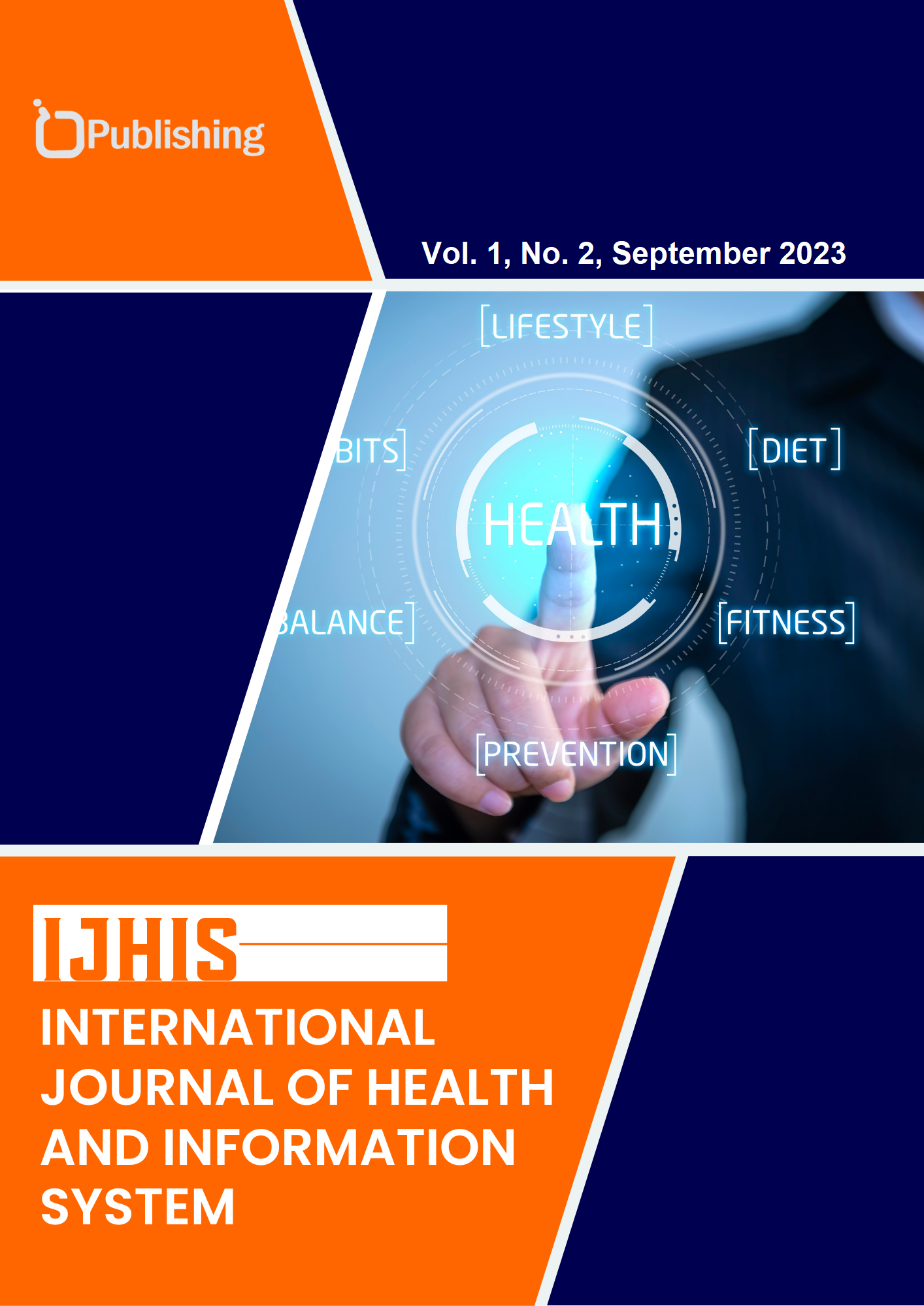Factors Related to Hearing Threshold of Workers at PT. X
DOI:
https://doi.org/10.47134/ijhis.v1i2.18Keywords:
Sound intensity, hearing threshold, noise hazardAbstract
Physical hazards are one of the several types of dangers in Occupational Health and Safety. Companies or industries that use machines in their work processes have the potential to cause a physical hazard. One of the physical hazards is noise. Noise exposure can have an impact on employee health, namely hearing loss. A decrease in hearing threshold values can cause communication disorders and concentration problems. Variables of sound intensity, period of work, age, and disease history can influence the reduction in hearing threshold values. The results of a preliminary study on workers at PT. X indicates the sound intensity is above the threshold value, namely 86dB and 16.6% of workers experience hearing loss. The aim of this research is to determine the factors related to the hearing threshold values of workers at PT. X. The methodology in this research uses a cross-sectional approach. This study had 30 workers as samples using total sampling techniques. The results showed that the sound intensity factors (ρ = 0.030) and disease history (ρ = 0.013) were related to the hearing threshold value. Meanwhile, the factors of work experience (ρ = 0.704) and age (ρ = 1.000) are not related to the hearing threshold value. The conclusion of this research is that there is a relationship between sound intensity and history of illness with the hearing threshold value of workers at PT. X.
References
S. Ramli, Sistem Manajemen Keselamatan & Kesehatan Kerja. Dian Rakyat, 2010.
WHO Europe, “WHO Europe GBD Data and statistics - Occupational Health,” 2017. http://www.euro.who.int/en/health-topics/environment-and-health/occupational-health/data-andstatistics (diakses 23 Juli 2023).
H. Waskito, “Faktor-faktor yang Mempengaruhi Gangguan Pendengaran Sensorineural Pekerja Perusahaan Minyak,” Jurnal Kesehatan Masyarakat Nasional, vol. 2, no. 5, 2008.
Lisa L Cunningham dan Debara L Tucci, “Hearing Loss in Adults,” New England Journal of Medicine, vol. 377, no. 25, hlm. 2465–2473, 2017.
World Health Organization, “World Report On Hearing,” Geneva, 2021.
National Institute for Occupational Safety and Health, “Noise and Occupational Hearing Loss,” https://www.cdc.gov/niosh/topics/noise/, 2023.
Kementerian Kesehatan RI, “Riset Kesehatan Dasar (RISKESDAS) 2019,” Jakarta, 2019.
Kementerian Kesehatan RI, “Pendengaran Sehat untuk Hidup Bahagia,” https://www.kemkes.go.id/article/view/2245/pendengaran-sehat-untuk-hidup-bahagia.html, 2013.
Kementerian Kesehatan RI, “Riset Kesehatan Dasar (RISKESDAS) 2013,” Jakarta, 2013.
R. Marisdayana, S. Suhartono, dan N. Nurjazuli, “Hubungan Intensitas Paparan Bising Dan Masa Kerja Dengan Gangguan Pendengaran Pada Karyawan PT. X,” JURNAL KESEHATAN LINGKUNGAN INDONESIA, vol. 15, no. 1, hlm. 22, Apr 2016, doi: 10.14710/jkli.15.1.22-27.
Hisma S, Syamsiar S. Russeng, dan Masyitha Muis, “HUBUNGAN KEBISINGAN DENGAN GANGGUAN PENDENGARAN PADA PEKERJA DI UNIT PRODUKSI PAVING BLOCK CV. SUMBER GALIAN MAKASSAR,” K3 Universitas Hasanuddin, 2014.
Tonghui Ding, Aihui Yan, dan Ke Liu, “What is noise-induced hearing loss?,” Br J Hosp Med, vol. 80, no. 9, 2019.
H. M. Hameed, A. H. Eleue, dan F. M. Hussein, “Noise induced hearing loss (NIHL) in wasit corporation textile industries,” Journal of Otolaryngology-ENT Research, vol. 11, no. 2, hlm. 108–114, Mar 2019, doi: 10.15406/joentr.2019.11.00418.
Diana Mayasari dan Rifda Khairunnisa, “Pencegahan Noise Induced Hearing Loss pada Pekerja Akibat Kebisingan,” J Agromed Unila, vol. 4, no. 2, Des 2017.
F. E. B. Setyawan, “Prevention of noise induced hearing loss in worker: A literature review,” Jurnal Kedokteran dan Kesehatan Indonesia, Agu 2021, doi: 10.20885/jkki.vol12.iss2.art12.
A. Lie dkk., “Occupational noise exposure and hearing: a systematic review,” Int Arch Occup Environ Health, vol. 89, no. 3, hlm. 351–372, Apr 2016, doi: 10.1007/s00420-015-1083-5.
Nur Rizqi Septiana dan Evi Widowati, “GANGGUAN PENDENGARAN AKIBAT BISING,” HIGEIA: JOURNAL OF PUBLIC HEALTH RESEARCH AND DEVELOPMENT, 2017.
Tarwaka, Solichul HA. Bakri, dan Lilik Sudiajeng, Ergonomi untuk keselamatan, kesehatan kerja dan produktivitas. Surakarta: UNIBA, 2004.
Susanto, “Risiko Gangguan Pendengaran Pada Neonatus Hiperbilirubinemia,” Universitas Diponegoro, Semarang, 2010.
Very Darmawan dan Mulyono, “HUBUNGAN KARAKTERISTIK INDIVIDU DENGAN NILAI AMBANG DENGAR PADA TENAGA KERJA DI PT BANGUN SARANA BAJA GRESIK,” Jurnal Kesehatan Lingkungan, vol. 7, no. 2, hlm. 134–139, 2014.
Downloads
Published
How to Cite
Issue
Section
License
Copyright (c) 2023 Salsabila Liandra Putri, Nuzula Afianah

This work is licensed under a Creative Commons Attribution-ShareAlike 4.0 International License.







